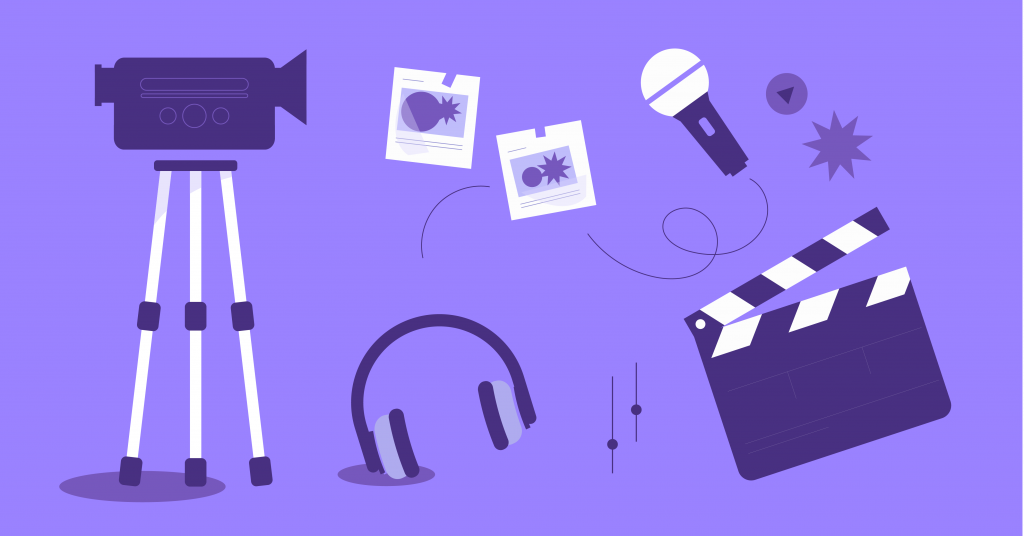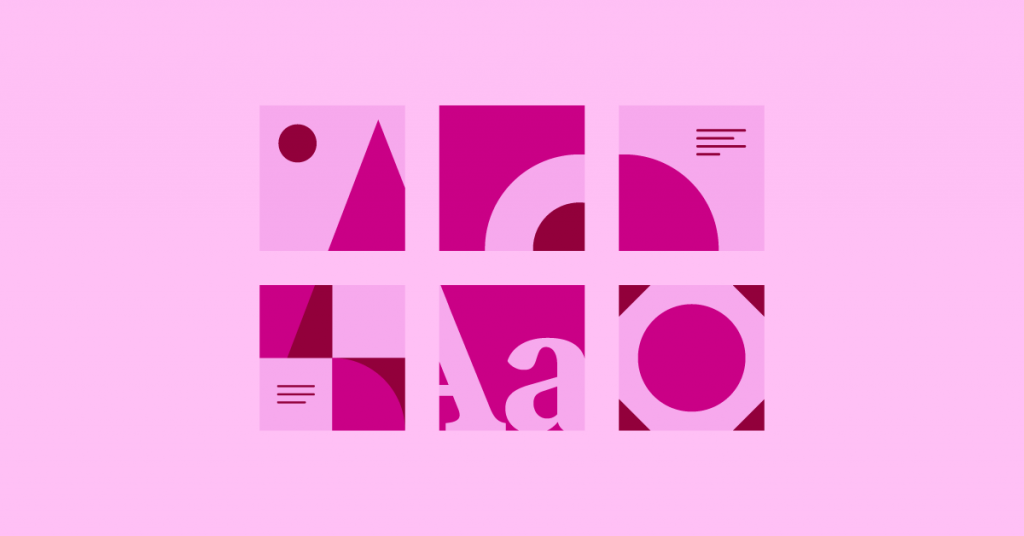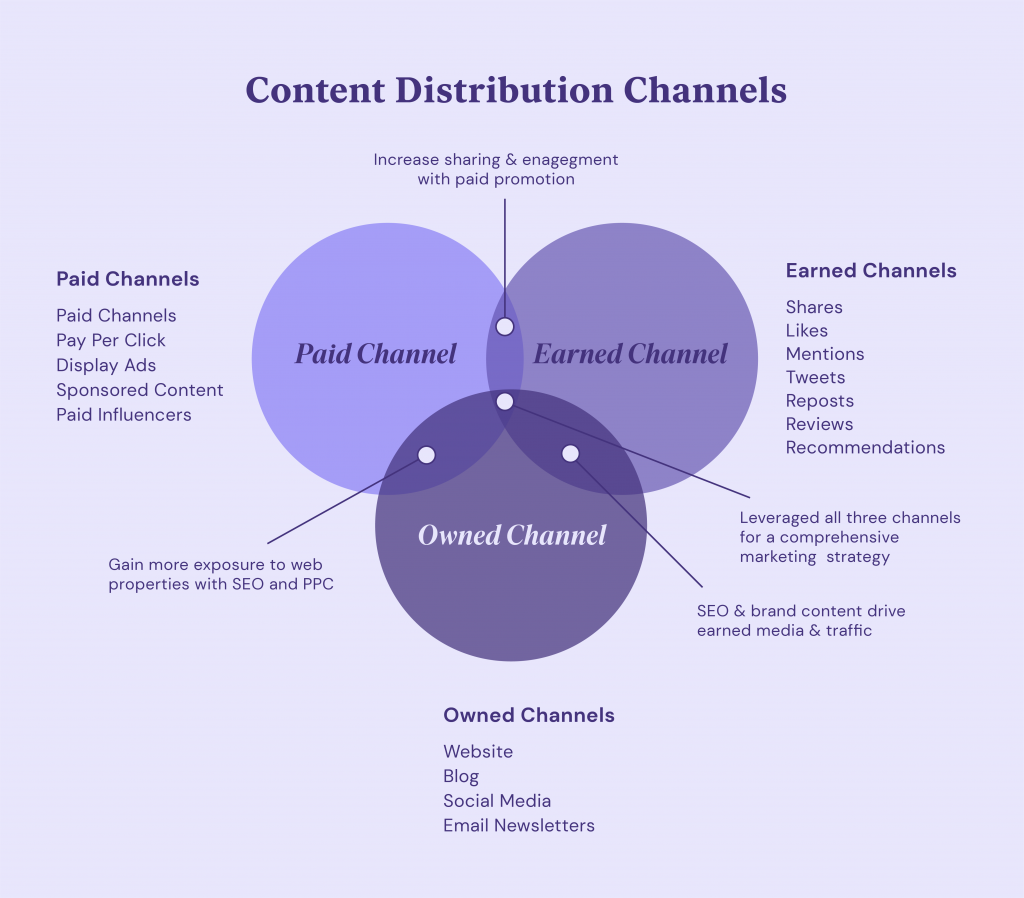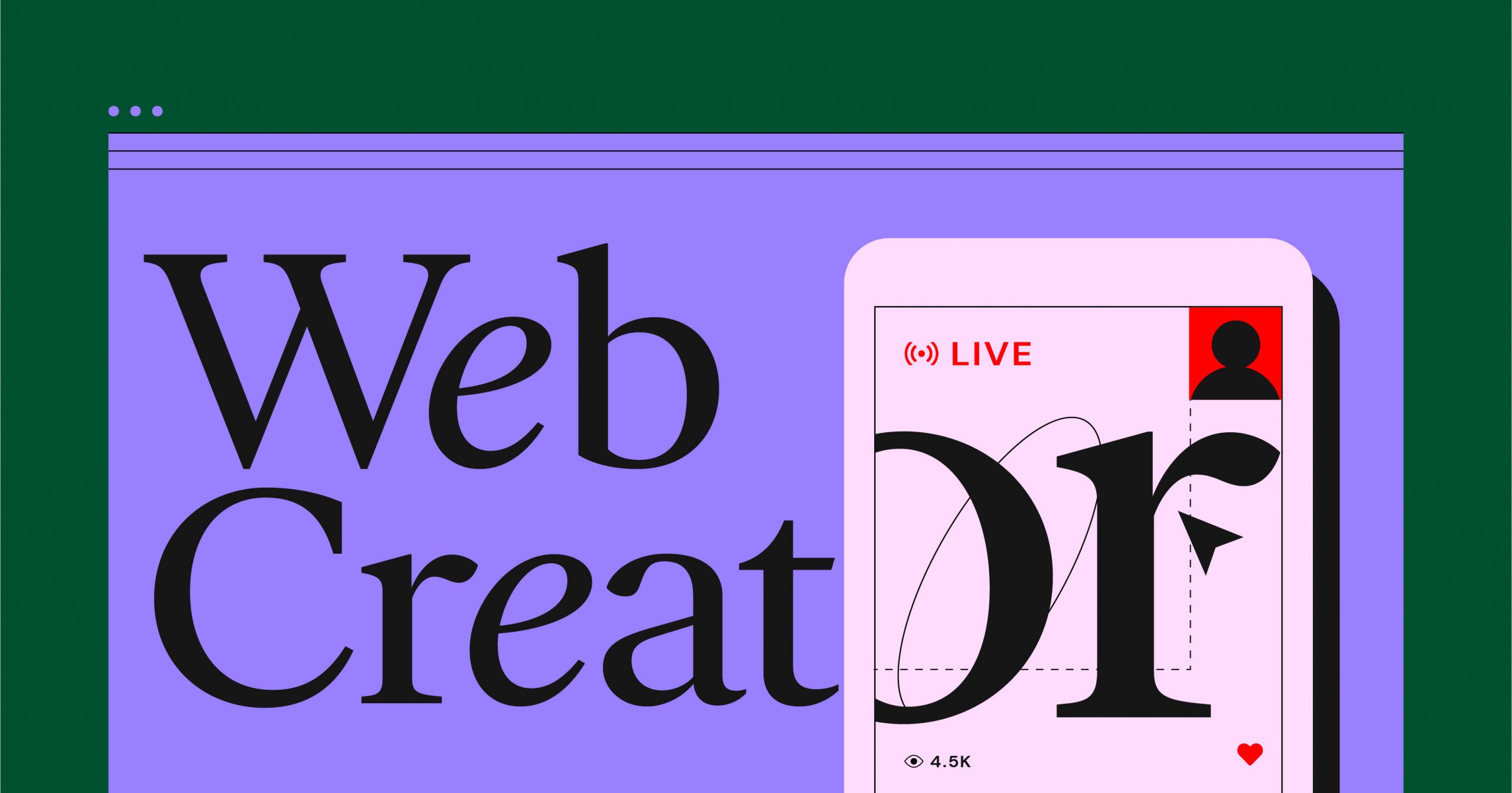Table of Contents
This guide will explain the world of online creation and examine the skills, tools, and strategies that help people make their mark online. Whether you want to be a social media star, video maker, podcast host, or blogger, this guide will give you the know-how and motivation to start your creative journey.
Let’s jump in and learn about the exciting world of online creation!
What is an Online Creator?
An online creator makes and shares content on the internet. This content can be:
- Videos
- Podcasts
- Blog posts
- Social media updates
- Photos
- Drawings
- Music
- And more
What sets online creators apart is their creative spark and desire to connect with an audience.
These people don’t just use the internet–they help shape it. They use different platforms and tools to express themselves, share knowledge, entertain, and inspire others. They are the builders of their own online worlds.
The Many Facets of Online Creation
Online creation isn’t just one skill or job. It needs a mix of:
- Creativity
- Tech skills
- Business smarts
A successful online creator often has to be a:
- Content maker
- Marketer
- Community Manager
- Business owner
All in one!
They need to:
- Understand their audience
- Make compelling stories
- Master visual and audio communication
- Keep up with changing social media rules
- Be smart marketers
- Build a loyal following
- Turn their passion into a lasting business
Key Traits of Successful Online Creators
1. Creativity and Innovation
In the busy online world, creativity is your best asset. It’s about:
- Coming up with fresh ideas
- Showing unique views
- Offering content that stands out
Whether it’s an engaging video, a thought-provoking blog post, or an eye-catching drawing, your creativity will draw people in and keep them coming back.
The online world is always changing. What’s popular today might be old news tomorrow. So, successful creators aren’t just creative; they innovate. They stay ahead by:
- Trying new formats
- Exploring new platforms
- Using new technologies
They keep their content fresh and interesting. They’re not afraid to push limits and question the usual way of doing things.
2. Authenticity and Relatability
In a time when many online personas are carefully crafted, being real is refreshing. People want genuine connections, and they can spot a fake easily. As an online creator, letting your true self shine through your content is crucial.
Tips for being authentic:
- Share your stories
- Talk about your struggles
- Celebrate your wins
- Be open and real
- Let your audience get to know the person behind the screen
This doesn’t mean sharing everything; it’s about being relatable and letting your audience see themselves in you. When people feel a connection, they’re more likely to:
- Engage with your content
- Share it with others
- Become loyal followers
3. Consistency and Persistence
Creating a dope online presence ain’t no walk in the park—it takes serious time, effort, and commitment. Consistency is key. You need to show up regularly to stay relevant and in people’s minds. This means:
- Posting new content on a schedule
- Talking with your audience often
- Promoting your work consistently
But consistency alone isn’t enough. You also need to persist. There will be setbacks, challenges, and times of doubt. But successful creators don’t quit. They:
- Keep creating
- Keep learning
- Keep pushing forward, even when things get tough
Remember, big things take time to build, and so does a thriving online presence.
4. Adaptability and Continuous Learning
The online world is always changing. New platforms pop up, rules change, and what audiences like shifts. To do well as an online creator, you need to be able to adapt. This means:
- Being open to new ideas
- Trying different approaches
- Accepting change
It’s about staying curious, learning new skills, and growing along with the online world.
Always learning is crucial. This includes:
- Mastering new software
- Staying up-to-date on industry trends
- Understanding your audience’s changing needs
Being willing to learn and grow will set you apart. The most successful creators see challenges as opportunities to grow and always want to improve their craft.
Types of Online Content
The online world offers many ways for creative expression. Online creators use various types of content to connect with their audiences. Let’s look at some of the most popular types:
1. Video Content

The video has become a leading force online. It can combine visuals, sound, and storytelling, making it very engaging. Popular video types include:
- Vlogs
- How-to videos
- Product reviews
- Live streams
- Short videos on platforms like TikTok
Why video works:
- It lets creators show their personalities
- It’s great for demonstrating skills
- It builds stronger connections with followers
- It’s flexible and can be adapted to various topics and interests
2. Audio Content

While video is king in some parts of the internet, audio content is also gaining popularity.
Popular audio formats:
- Podcasts
- Audiobooks
Podcasts have become popular for creators to share their thoughts, expertise, and stories in a more personal and conversational format.
Audiobooks are also becoming more popular. They offer a handy way for people to consume content on the go.
Podcasts, educational series, and audiobooks offer a unique listening experience that’s totally cool and popular with everyone.
3. Written Content

Despite the rise of visual and audio formats, the written word still holds power online. Written content includes:
- Blogs
- Articles
- Social media captions
- Well-crafted emails
Benefits of written content:
- Allows for in-depth exploration of ideas
- Provides detailed explanations
- It helps establish thought leadership
- It can be easily shared and consumed across various platforms
Well-written content not only informs and educates but also entertains and inspires. It fosters a sense of connection with the audience, encouraging them to engage, comment, and share.
4. Visual Content
A picture can say a lot; online, that’s truer than ever. Visual content includes:
- Photography
- Graphic design
- Animation
Visual content is crucial in catching attention and conveying messages quickly and effectively.
How visual content helps:
- It makes blog posts, social media feeds, and websites more appealing
- Presents complex information in an easy-to-understand format (infographics)
- Brings stories to life (animations)
- It makes any task more enjoyable
Visual content can help creators stand out and leave a lasting impression in a world where people are constantly bombarded with information. It’s a powerful storytelling, branding, and communication tool that goes beyond language barriers and connects with a global audience.
Platforms for Online Creation and Sharing
Many platforms are available for creators, each with its own strengths and audiences. Choosing the best platform is super important if you want to reach the people you’re aiming for and make a big difference. Let’s look at some of the most popular options.
1. Social Media Platforms
Social media has changed how we connect and share information. For online creators, platforms like Instagram, TikTok, YouTube, and Twitter offer great chances to build an audience, show off their work, and talk with followers.
- Best for: Visuals
- Ideal for creators who: Excel in photography, graphic design, or lifestyle content
- Key feature: Focus on aesthetics and storytelling
- Benefit: Great for building a strong brand identity
TikTok
- Known for: Short videos
- Popular among: Younger audiences
- Content types: Creative, humorous, and trendy videos
- Opportunity: Chance for creators to go viral and gain massive exposure
YouTube
- Best for: Longer videos
- Hosts: A wide range of creators (vloggers, gamers, educators, musicians)
- Key benefit: Features for making money from content
- Appeal: Attractive for those looking to earn income from their videos
Twitter (X)
- Known for: Real-time conversations and short format
- Value: Great tool for creators to share thoughts, join discussions, and connect with their audience personally
Remember: Each platform has its own unique culture and audience. Figuring out these differences will help you pick the platforms that work best for your staff and the people you want to reach.
2. Blogging Platforms
For authors who love to write, blogging platforms create a space where they can express their ideas, share their experiences, and show off their knowledge in long-form articles. WordPress and Medium are two leading platforms in this area, each with its own distinct advantages.
WordPress
- Known for Flexibility and customization options
- Allows creators to Build unique and visually appealing blogs
- Key feature: Large library of plugins and themes
- Best for Those wanting full control over their online presence
Medium
- Offers: A simple and clean writing experience
- Focus: Content and Community
- Ideal for: Writers who want to share their ideas with a built-in audience
- Key benefit: A clean interface and emphasis on readability help creators cut through the clutter
Other Platforms
Beyond social media and blogging platforms, there are many other ways for online creators to share their content and connect with their audience.
- Email newsletters
- Provide a direct way to communicate with followers
- Allow creators to share updates, exclusive content, and personal messages
- Online courses
- Offer a way to make money from expertise
- Provide value to an audience eager to learn
- Membership sites
- Create a sense of exclusivity and community
- Offer premium content and benefits to subscribers
These alternative platforms can complement a creator’s main social media or blog presence, offering additional opportunities for engagement, making money, and growing their audience.
Building a Website with Elementor
While social media and other platforms are great for sharing content, a website serves as a central hub for your online presence. It’s a space you own and control, where you can:
- Showcase your work
- Connect with your audience
- Sell products or services
Building a website may be scary for new online creators. But don’t worry! With user-friendly website builders like Elementor, creating a professional-looking website is easier.
Why Choose Elementor?
- Easy-to-use: Drag-and-drop interface
- No coding needed: Design stunning pages without any coding knowledge
- Lots of options: Large library of templates, widgets, and design elements
- Works with WordPress: Ensures a flexible website-building experience
Step-by-Step Guide to Building a Website with Elementor
- Choose a Domain Name
- Pick a name that’s easy to remember
- Make sure it fits your brand or niche
- Select a Hosting Provider
- Look for:
- Fast loading times
- Excellent customer support
- Tip: Elementor’s WordPress Hosting, powered by Google Cloud, is a great option. It’s set up to work well with WordPress websites.
- Look for:
- Install WordPress and Elementor
- Most hosting providers offer one-click WordPress installation
- Once WordPress is set up, install the Elementor plugin from the WordPress repository
- Choose a Theme
- Choose a theme that matches the vibe of your brand and the style of your content
- Elementor works well with most WordPress themes
- You can change the design to match what you want
- Start Designing
- Use Elementor’s drag-and-drop editor to build your pages
- Add text, images, videos, and other elements easily
- Make your project stand out by choosing your own colors, fonts, and layouts
- Add Essential Pages
- Create key pages such as:
- Homepage
- About page
- Contact page
- Portfolio or blog section
- These pages showcase your work and help you connect with your audience
- Create key pages such as:
- Publish Your Website
- Once you’re happy with your design, hit the publish button
- Share your creation with the world!
With Elementor, you can build a professional website that showcases your brand and catches your audience’s eye. This thing is like a magic wand for website design. Even if you’re a coding newbie, you can create awesome websites with it.
Building an Online Presence
For any newbie content creator trying to make a name for themselves in the digital realm, creating a solid online presence is super important. It’s about creating a brand that people recognize and like, which attracts and keeps an audience. Let’s look at the main steps to building a successful online presence.
1. Develop a Personal Brand

Your personal brand is what makes you stand out in the crowded digital space. It’s the unique mix of your personality, values, skills, and expertise. Think of it as your digital fingerprint—a special mark that identifies you and your content.
- Define your niche
- Ask yourself:
- What are you passionate about?
- What topics do you know a lot about?
- What problems can you solve for your audience?
- If you pick a particular area of interest, you’re more likely to draw in a group of people who are into the same stuff and share your views.
- Ask yourself:
- Create a consistent brand identity.
- This includes:
- Visual elements (logo, color scheme, fonts)
- Messaging (tone of voice, key messages)
- Use these consistently across all your online platforms to help people recognize and remember your brand.
- This includes:
- Craft a compelling bio
- Tell your story
- Show off your expertise
- Highlight your achievements and passions
- Explain what makes you unique
- A well-written bio can make people curious and want to learn more about you and your content.
2. Create High-Quality Content

Content is the heart of any digital creator’s online presence. It attracts, engages, and keeps an audience. But in a world full of content, just creating something isn’t enough. You have to craft top-notch content that blows everyone’s mind.
What Makes Content High-Quality?
- It’s engaging
- It’s informative
- It looks good
- It gives value to your audience (through entertainment, education, or inspiration)
- It starts conversations
- People want to share it
- It leaves a lasting impression
Tips for Creating High-Quality Content:
- Understand your audience
- What kind of content do they like?
- What problems or challenges do they face?
- What solutions or insights can you offer?
- Tailor your content
- Address your audience’s needs
- Provide real value
- Pay attention to visuals
- Use high-quality images, videos, and graphics
- Make sure visuals support your message
- Keep your design clean and easy to read
- Try new things
- Experiment with different formats and styles
- Stay curious and open to new ideas
- Find what works best for your audience and lets you express your creativity
3. Optimize Content for Search Engines
Creating great content is only half the battle. You also need to make sure people can find it. That’s where Search Engine Optimization (SEO) comes in. SEO helps your content show up higher in search results on sites like Google, making it easier for potential viewers or readers to find.
SEO Basics for Creators:
- Do keyword research
- Discover the keywords and expressions that your target audience is typing into search engines.
- Use these keywords naturally in your content
- Write good metadata
- Create clear, interesting title tags and meta descriptions
- These short summaries tell search engines what your content is about
- They also entice users to click on your content in search results
- Pay attention to technical SEO
- Make sure your website loads quickly
- Make sure it runs smoothly on phones and tablets.
- These factors affect how well your site ranks in search results
- Keep learning about SEO
- SEO is always changing
- Stay up-to-date with the latest best practices
- This helps keep your content visible and easy to find for your target audience.
Heads up! Building a solid online presence is not easy. It takes time and some serious dedication. But with these strategies, you can create a brand that stands out, produces great content, and effectively connects with your audience.
Content Creation Tools and Software
Software and apps are must-have helpers for digital creators. They make work easier, boost creativity, and improve content quality. Let’s look at some key tools that help creators bring their ideas to life.
The tools you need depend on what kind of content you make. However, some basic types are important for most digital creators.
1. Video Editing Software
- For pros: Adobe Premiere Pro or Davinci Resolve
- For beginners or on a budget: CapCut Pro or iMovie
These tools help you make polished videos.
2. Audio Tools
- Free option: Audacity (open-source)
- Paid options: Adobe Audition, GarageBand
Tip: Buy a good microphone for clear sound.
3. Graphic Design and Animation Software
- For image editing and design: Adobe Photoshop and Illustrator
- For animation: Adobe After Effects
- Simple option: Canvas animation features
Informal Rewrite: Remember, the best tools are the ones that fit your work style and budget. Try different options to find what helps you create your best work.
Developing a Content Strategy
A good content strategy is like a map for digital creators. It gives you direction, keeps your work consistent, and helps you reach your goals. Let’s break down the main parts of a successful content strategy.
1. Setting Goals and Objectives
Before you start creating content, you need clear goals. Ask yourself:
- What do I want to achieve with my content?
- Do I want to grow my audience?
- Do I want to make my brand more known?
- Do I want to get more people to visit my website?
- Do I want to get leads and make sales?
Your goals will shape your strategy and affect:
- The type of content you create
- The platforms you use
- The things you measure
Make your goals SMART:
- Specific
- Measurable
- Achievable
- Relevant
- Time-bound
This makes it easy for you to concentrate and see how far you’ve come.
Examples of good goals:
- Increase Instagram followers by 20% in the next three months
- Get 100 leads for your online course through blog posts in six months
Clear goals help you create a strategy that fits your business plans.
2. Knowing Your Target Audience
Understanding who you’re creating for is crucial. It’s more than just knowing their age, gender, and location. You need to know:
- Their interests
- Their problems
- What motivates them
Ask yourself:
- What makes them tick?
- What worries keep them up at night?
- What solutions are they looking for?
Create a detailed picture of your ideal follower. This involves:
- Researching how they behave online
- Looking at their social media activity
- Doing surveys or interviews
When you know your audience well, you can make content that speaks to their needs and wants. This will:
- Attract more followers
- Create a stronger connection with your audience
- Build loyalty
3. Making a Content Calendar
Being consistent is key in the online world. A content calendar is your plan for success. It shows:
- What you’ll publish
- When you publish it
- Which platforms do you use
A content calendar helps you:
- Stay organized
- Keep a regular posting schedule
- Avoid last-minute rushes to find ideas
- Don’t get caught off guard! Plan in advance for special events, holidays, or promotions.
Tools for creating a content calendar:
- Google Sheets
- Trello
- Social media management tools like Hootsuite
Remember: Your content calendar should be flexible. Change it based on how your audience responds and if your goals change. The main thing is to have a plan that guides your content creation and keeps you consistent.
Audience Engagement and Community Building
Creating a killer online presence is more than just throwing stuff out there. It’s about getting up close and personal with your audience. Chatting with your followers and creating a tight-knit community around your brand is the secret sauce to lasting success.
1. Talk with Followers
Your audience wants to feel heard and valued. Here’s how to engage with them:
- Respond to comments, messages, and direct messages
- Show real interest in their thoughts and opinions
- See every interaction as a chance to build a relationship
Try this: Host live events or Q&A sessions to talk with your audience in real time. This creates a direct connection and makes people feel part of a community.
Get people involved: Ask questions, run polls, or start discussions. The more you engage with your audience, the more they’ll care about your brand and content.
2. Hosting Live Events and Q&As
Real-time interaction is super valuable in the online world. It adds a human touch and helps you connect more deeply with your audience. Live events and Q&A sessions are great ways to do this.
Benefits of live events:
- People can watch you create content in real-time
- Followers can ask questions and get quick answers
- It makes your brand more human
- It strengthens your bond with followers
How to run successful Q&As:
- Be prepared: Plan your content in advance
- Think about possible questions
- Be ready to adapt to the conversation
- Have fun, and let your personality shine through
Use these features: Try polls and surveys to get feedback and tailor your content to what your audience wants.
3. Working with Other Creators
Teaming up with other creators is a powerful way to grow. It helps you:
- Reach new audiences
- Get fresh ideas
- Create even better content
Ways to collaborate:
- Cross-promotion: Share each other’s content or mention each other in videos or posts
- Joint content: Create something together
- Guest appearances: Show up on each other’s podcasts or live streams
- Co-create products or services
When choosing collaborators, look for creators who:
- Share your values
- Have a similar audience
- Have skills that complement yours
A good collaboration helps everyone involved. It boosts growth, creativity, and community.
Monetization Strategies for Digital Creators
Turning your passion into profit is a big goal for many digital creators. The good news is that there are many ways to make money online. Let’s look at some of the most common and effective strategies.
Different Ways to Make Money
Digital creators don’t have to rely on just one way to make money. Having a variety of ways to make money is like the foundation of a strong and successful business. Here are some popular ways to make money:
- Advertising and Sponsorships
- Join forces with cool brands to spread the word about their awesome products or services.
- This can include sponsored content, product placements, or dedicated ads
- Affiliate Marketing
- Recommend products or services you like
- Earn a commission on each sale made through your special link
- Selling Products or Services
- Turn your knowledge and skills into a side hustle by creating and selling digital products such as e-books, courses, or templates.
- Provide consulting or coaching services to your target demographic.
- Crowdfunding and Donations
- Use platforms like Patreon and Kickstarter
- Let your biggest fans support your work directly through monthly subscriptions or one-time donations.
The great thing about being a digital creator is that you can mix and match these strategies. You can create a money-making plan that fits your content, audience, and goals.
Choosing the Right Strategy for You
The best way to make money will depend on a few things:
- Your content niche
- How big your audience is, and how much they engage
- What you prefer
It’s important to choose methods that:
- Match your brand values
- Make sense to your audience
Here are some tips for different strategies:
- Brand Partnerships and Sponsorships
- Good if you have a large and engaged following
- Only partner with brands that fit your values
- Choose brands your audience will find relevant
- Affiliate Marketing
- Great if you like recommending products or services
- Be honest: Always tell your audience about your affiliate relationships
- This helps maintain trust
- Selling Products or Services
- It lets you make money directly from your expertise
- This could mean making and selling stuff online, like e-books, online courses, or digital art.
- Or offering consulting or coaching services
- You could even launch your own merchandise
- Crowdfunding and Donations
- It gives your biggest fans a way to support your work directly
- Platforms like Patreon offer a subscription model
- Fans get special stuff and benefits by paying a fee each month.
Remember: Try different strategies to find what works best for you. Building a steady income as a digital creator takes time and effort. Be patient, keep at it, and always focus on giving value to your audience.
Legal and Ethical Guide for Digital Creators
As a digital creator, you wear many hats. You’re not just making cool stuff – you’re running a business, too. This means you need to know about some important legal and ethical rules. Let’s break it down:
Protect Your Work
Your content is your property. You made it, so you own it. Here’s how to keep it safe:
- Know your rights: Copyright law protects your original work. This includes:
- Videos
- Music
- Written content
- Visual art
- Understand key concepts:
- Fair use
- Creative Commons licenses
- Copyright infringement
- Take action:
- Put watermarks on your images
- Register your copyrights
- Use tools that stop people from stealing your content
Be Honest with Your Audience
Trust is super important. Your fans need to know they can believe what you say. Here’s how to build trust:
- Be clear about sponsorships: If a company is paying you to talk about their product, say so.
- Explain affiliate links: Tell your audience if you’ll make money when someone buys a product you recommend.
- Why it matters:
- It keeps you out of legal trouble
- It makes you look more trustworthy
- People are more likely to support creators they trust
Handle Data Carefully
When you collect info from your fans, you need to treat it with respect. This could be:
- Email addresses for your newsletter
- Data about how people use your website
Here’s what to do:
- Learn about data laws: Look up GDPR and CCPA. These are big rules about data protection.
- Ask before you take: Get permission before you collect personal info.
- Keep data safe: Store info securely so hackers can’t get it.
- Be open about data use: Tell people how you’ll use their info.
- Why it’s worth it: When you respect people’s privacy, they’ll trust you more.
Remember: Being a good digital creator is about more than just making great content. It’s also about being responsible and ethical. When you follow these guidelines, you’re building a strong foundation for long-term success.
Challenges and Opportunities for Digital Creators
Being a digital creator comes with its ups and downs. The online world is always changing and full of competition, but it also offers many chances to succeed. Let’s look at some key aspects of this field.
Dealing with Changing Algorithms and Platform Rules
Social media sites and search engines often update their operations, which can affect the number of people who see your content. It’s crucial to keep up with these updates and change your plans when needed.
When algorithms change, it can alter how your content shows up and how many people engage with it. To stay ahead:
- Learn how these new systems work
- Adjust how you make and share your content
Platform rules can also shift, affecting:
- What kind of content you can post
- How you can make money
- Community Guidelines
Stay informed about these changes to avoid problems and make sure your content follows the rules.
In this ever-changing online world, being able to adapt quickly is a valuable skill. By staying informed and taking action, you can lessen the impact of these changes and keep your content reaching the right people.
Taking Care of Your Mental Health as a Digital Creator
The constant work of creating, engaging with your audience, and growing your online presence can be taxing on your mind and emotions. It’s vital to prioritize self-care and set healthy limits.
Digital creators often face issues like:
- Burnout
- Anxiety
- Comparing themselves to others
To combat these problems:
- Make time for activities that recharge you
- Spend time in nature
- Pursue hobbies
- Connect with friends and family
- Take breaks from social media
- Disconnect from the online world when needed
Your mental health is just as important as your creative work. By taking care of yourself, you can build a long-lasting and fulfilling career as a digital creator.
Keeping Up with New Tech and Trends
The tech world is always changing, with new gadgets and ideas popping up all the time. As a creator, staying up-to-date is key to staying relevant and keeping your audience interested.
Some technologies changing the digital world include:
- Virtual reality
- Augmented reality
- Artificial intelligence
Explore how these new tools can make your content better and give your audience unique experiences.
To stay ahead:
- Keep track of the latest topics in your field
- Update your content plan to match new trends
- Try out new technologies
By doing this, you’ll keep your content fresh and exciting, making you stand out from the crowd.
Growing and Keeping Your Audience
Getting people to follow you is one thing, but keeping them interested is another challenge. The online world is noisy, and people’s attention spans could be longer. Creators need to keep making high-quality, relevant content that connects with their audience.
Tips for understanding and engaging your audience:
- Use analytics to track what content performs best
- Try different formats and styles to keep things interesting
- Tailor your content to your audience’s likes and needs
Building a community goes beyond just creating content. It involves:
- Having meaningful conversations with your followers
- Responding to comments and messages
- Creating a sense of belonging
This takes time and effort, but it’s crucial for building a loyal following that will support you in the long run.
Your audience is your most valuable asset. Treat them well by:
- Nurturing relationships
- Providing value
- Consistently delivering content that meets their needs and expectations
Making Money as a Digital Creator
While the creative side of digital creation is fulfilling, making enough money is crucial for long-term success. Earning from what you love isn’t just about hoping for the best. You need a plan and to carry it out like a pro.
Many creators struggle with making money, especially when they’re just starting out. Building an audience and setting up a steady income takes time. Be patient and persistent, and explore different ways to make money to find what works best for you.
Remember, your audience’s trust is key. Avoid:
- Being too promotional
- Partnering with brands that don’t fit your values
Instead of focusing solely on making money from your followers, try to:
- Give them something valuable
- Build real connections with them
If you do this, you’re more likely to earn money from your efforts naturally.
Being Flexible is Key
The online world is always changing, and successful creators are those who can change with it. New platforms, technologies, and trends are always popping up, bringing both challenges and opportunities.
To stay relevant and grow online:
- Go with the flow and keep up with new trends
- Try new content formats
- Explore new platforms
- Learn new skills
The most successful creators see challenges as chances to grow. Stay curious, stay informed, and never stop learning. The digital world is yours to shape!
Wrapping Up
Digital creators are at the forefront of online innovation and influence. They shape trends, inspire communities, and build successful careers by sharing what they love and know online.
From making engaging videos to writing thought-provoking blog posts, digital creators use many ways to connect with their audience and make their mark on the world. They handle challenges like changing algorithms and tough competition while taking advantage of new technologies and trends.
Whether you want to be a creator or are just curious about this exciting field, understanding what digital creation is all about is important. It’s more than just making content; it’s about:
- Building a brand
- Creating a community
- Making a sustainable business
As you bring your ideas to life, remember what makes successful digital creators:
- Creativity
- Authenticity
- Consistency
- Flexibility
- Always trying to grow
Face the challenges, grab the opportunities, and let your passion shine through your content.
The online world is your canvas. It’s time to create something amazing.
Looking for fresh content?
By entering your email, you agree to receive Elementor emails, including marketing emails,
and agree to our Terms & Conditions and Privacy Policy.






